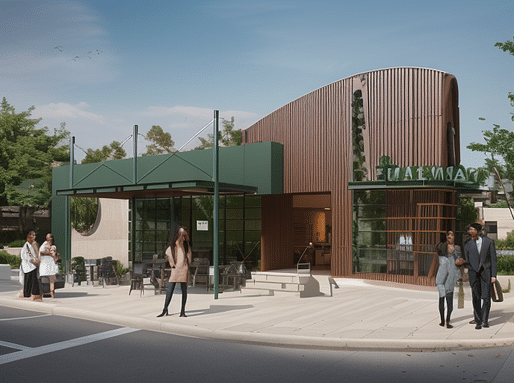
As an architectural designer and researcher, my work has consistently revolved around exploring and integrating cutting-edge tools to push the boundaries of architectural design. Over the past few years, I’ve experimented with generative AI design tools such as MidJourney, DALL-E, and Stable Diffusion, which have transformed the way I approach creative processes, conceptualize ideas, and execute projects.
The Advent of Generative AI in Architecture
Generative design tools have recently become powerful assets in the architectural landscape, offering new means to explore designs and visualizations through machine learning. While the traditional design process relies heavily on human creativity, experience, and intuition, these tools supplement and extend these abilities, generating new design iterations faster than ever before.
When I first encountered tools like MidJourney and Stable Diffusion, I was captivated by how seamlessly they could generate high-quality images from textual input, creating unique, often unexpected interpretations. These tools don’t replace the architect’s vision but serve as powerful companions in the design journey, especially during the concept stage.
MidJourney: A Journey of Creative Collaboration
My experience with MidJourney has been particularly transformative in visualizing early-stage concepts for complex projects. The platform's ability to quickly generate various design options provides valuable input for projects where rapid prototyping is essential.
In one of my experimental projects involving a smart urban development concept, MidJourney allowed me to visualize futuristic urban environments, offering insight into how AI can enhance not only aesthetics but functionality as well.
The organic nature of the designs generated by MidJourney also introduces unexpected forms, which, when combined with traditional architectural principles, can lead to groundbreaking innovations in spatial design.
DALL-E, with its focus on generating images from textual descriptions, has been particularly helpful in articulating design concepts to clients. By providing a clear prompt, I can receive a visual representation that captures the essence of my ideas. This capability has streamlined communication, enabling my clients to grasp the intended vision more readily. The tool's adaptability to different styles has also allowed me to experiment with various architectural themes, from minimalist to futuristic designs.
Stable Diffusion has further enriched my toolkit. Its open-source nature invites experimentation, allowing me to fine-tune outputs to align with my specific project requirements. Whether it’s producing intricate details for a façade or envisioning landscaping solutions, Stable Diffusion gives me the flexibility to iterate quickly, adapting designs as new ideas emerge.

Implications for Architectural Practice
The implications of using these generative design tools are profound. They challenge traditional workflows and encourage a more collaborative approach between human creativity and machine learning. I've found that while these tools can produce impressive results, the real magic happens when I infuse my architectural knowledge and intuition into the process.
One significant advantage is the speed at which I can iterate designs. What once took weeks of manual sketching and modeling can now be achieved in hours. This efficiency not only accelerates project timelines but also allows for more experimentation and refinement, which is crucial in a field where design choices can have long-lasting impacts.
However, with great power comes great responsibility. As we incorporate AI into our design processes, we must remain vigilant about ethical considerations and the potential for biases in generated outputs. It's essential to view these tools as extensions of our creativity rather than replacements. My approach is to maintain an active role in guiding the design process, ensuring that the final outcomes align with the project’s context, sustainability goals, and the needs of the users.
Looking Ahead
As I continue to explore the capabilities of Midjourney, DALL-E, and Stable Diffusion, I am excited about the future of architectural design. These tools are not just trends; they represent a shift in how we conceive and create spaces. By embracing generative design, we can push the boundaries of our imagination and redefine what is possible in architecture.
In conclusion, the journey with generative design tools has been transformative. They have enhanced my creative process, facilitated clearer communication with clients, and opened up new avenues for innovation. As architects, we must embrace this technology while remaining mindful of our role as the architects of the built environment, ensuring that our designs resonate with human experience and cultural significance.
The blog intends to focus, explore and give insights into the dynamic intersection and synergy between Artificial Intelligence and modern architecture. My blog delves into the latest AI tools revolutionizing architectural design, wants to examine their impact on efficiency and creativity and emerging trends in intercompatibility among advanced design software. The main themes: AI tools in Architecture, Innovative Design Solutions, Future Trends and Innovations.
No Comments
Block this user
Are you sure you want to block this user and hide all related comments throughout the site?
Archinect
This is your first comment on Archinect. Your comment will be visible once approved.